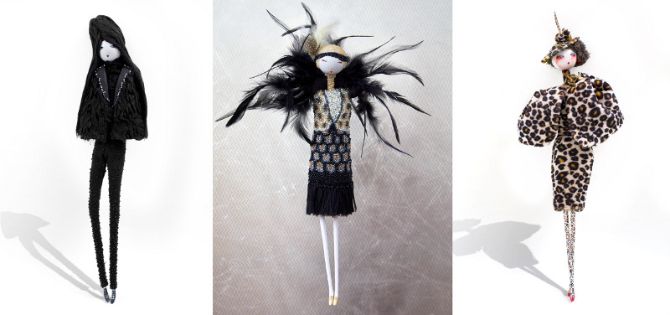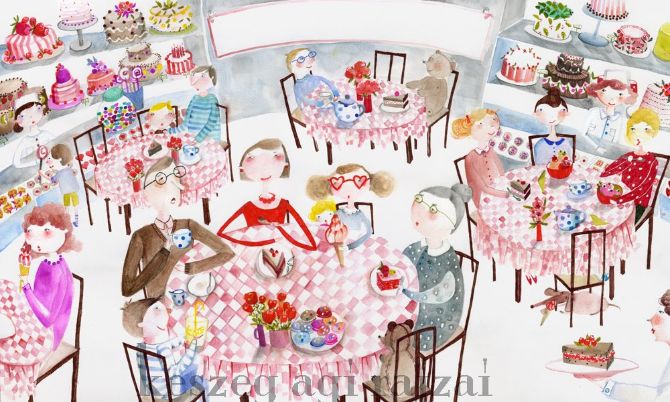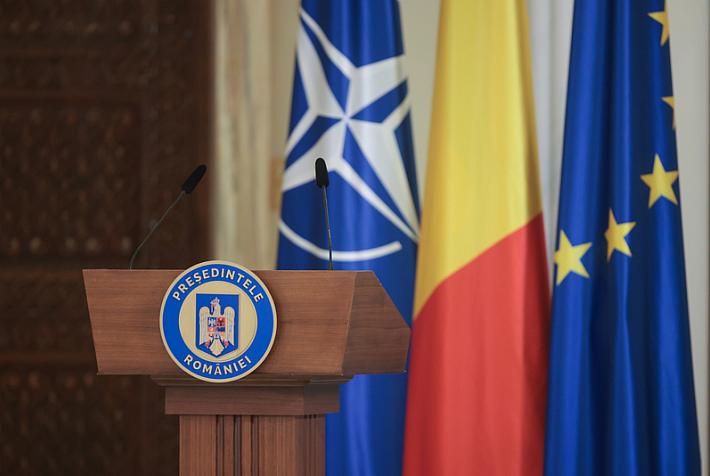The miniature universe of Agnes Keszeg
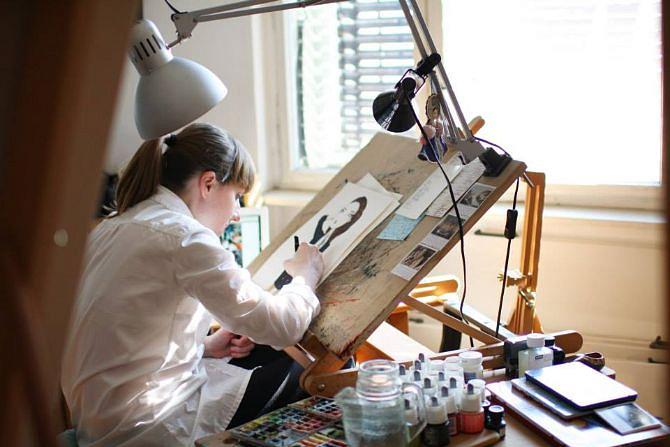
Meet the Cluj-based artist whose illustrations are being published all over the world.
It’s almost 7a.m. and Agnes Keszeg jumps out of her bed and goes directly to the big drawing table, full of papers, collages, dolls or objects from the flea market. With her bangs still a bit messy, she grabs the coffee and turns on her iMac. There is a new e-mail in her inbox: the Horoscope she drew for the Elle magazine in Spain will also be published in the Turkish edition of the magazine.
The organised mess on the table mirrors the many projects she’s simultaneously working on, but now it’s the beginning of August and she’s less crowded. Today she’ll afford the luxury to only work on one project she started two years ago. She’s close to finishing the illustration for a short-story book called “At the Crossroads” written by Razvan Georgescu, a Romanian documentary filmmaker living in Germany. It’s the 26th book she has illustrated, a number a tiny smaller than her age.
As the morning light slowly gets into the room, after getting past the gatekeeper, a little dinosaur hanged on the window, Agnes cuts little pieces of paper in the shape of a truck, or a traffic sign. Since she has started working as a freelancer in 2008, Agnes has illustrated magazines, fashion collections, children's books, postcards, scarves. But it was always working on books which offered her the possibility to experiment the most. For the current one, she has decided upon the collage technique and she’s working on it with her husband, the photographer Mihai Platica. They share the same studio, in their apartment in Cluj Napoca, a city Agnes really enjoys. There is something about its silence that fits her perfectly. There are enough things happening not to feel isolated, but not too many to keep her distracted.
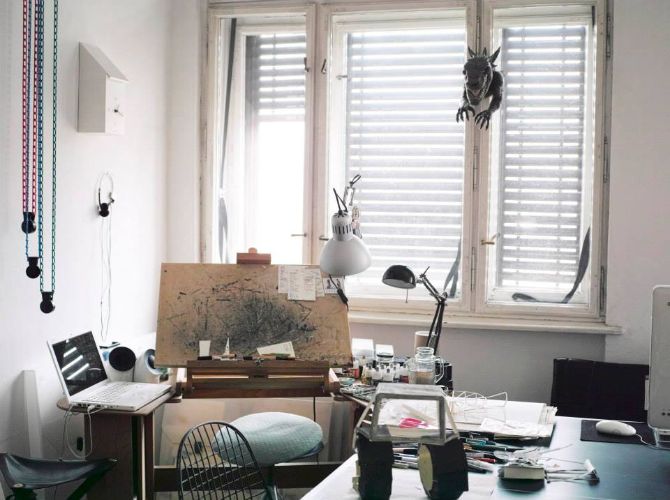
As you pass by the students that gather in front of the Central University Library of Bucharest for the coffee and cigarettes break, you come across a contemporary art gallery called Galateca. Some skinny, elegant and slightly arrogant ladies stare at you from behind the gallery’s storefront. Stunningly beautiful as they are, they are though not made of flesh and bones, weigh less than one kilo and are about 40 cm tall. These delicate creatures, which came out of Agnes’ hands, have their head, legs and arms made of porcelain, while their bodies are made of textiles and wires.
Agnes started creating these exquisite dolls in 2008, after doing the illustrations for The Book of Princesses, written by the Hungarian writer Zalán Tibor. The story, split in two volumes, talks about the 40 daughters of an emperor, all elegant, beautiful and also very brave. Opposite to the traditional fairy tales, where the princess is always saved by a prince from the mean intentions of a dragon, here it’s the princesses who are the true heroines and quite often save the poor, helpless princes.
So after illustrating the first volume which tells the adventures of the first 20 princesses, Agnes went on giving these lionhearted beauties a well-deserved body and dreamlike clothes. Their iron will and moral integrity must have been sacrificed to vanity and a bit perverted by the haute couture clothing Agnes sewed and embroidered for them, because all they seem to care about now is taking away your breath.
Unlike the opulence her dolls display, Agnes is more reserved and leaned toward a minimalistic style. You gradually discover her in little details, like a tiny pin in the shape of a bird, or a crown-shaped ring. The perfectly cut bangs frames her delicate features and uncovers thoughtful eyes. Her appearance matches her friendly, but discreet personality. You can tell in a second that she’s extremely agile and trustworthy, but it takes a while until she reveals her child-like joy when she talks about something that thrills her.
She wanted to study tapestry and textile art, like the artists from the ‘70s who were weaving and experimenting with fabrics, but she finally enrolled at the University of Art and Design in Cluj Napoca to study fashion. Agnes soon realised that it was only the concepts and the story that fascinated her. The production part, finding the right fabrics and actually creating the collections seemed a burden and she slowly shifted towards illustration. But she has kept connections to the fashion world, designing a series of scarves with mesmerizing patterns and creating the patterns for an Irina Schrotter collection designed by Lucian Broscatean.
It was during the third year at University when Agnes felt she could draw differently and stylize all the forms in her own manner. Her sketches began reflecting a certain style, which, even though polished and improved along the years, remains her trademark.
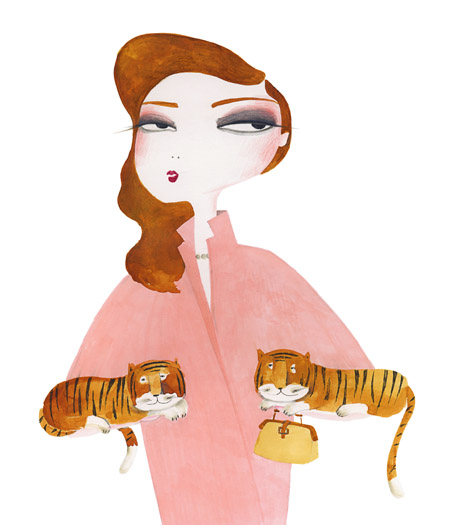
“There is no such thing as waiting for inspiration,” she says. Sometimes there are so many projects she has to handle at the same time, that when she finishes one projects she immediately jumps to the next one. There are times when she wakes up at 5 a.m. and works all day long, even up to 2 a.m the next day.
When she started freelancing about seven years ago, there were very few illustrators in Romania. She wrote tens of emails asking for collaborations and only sometimes received answers. “The funny part was when I contacted an agency and didn’t get an answer, and then four years later, they contacted me for a project.” And since she finished her website about two years ago, she has been receiving more and more proposals from abroad.
“Oh, I have no idea how I imagined my future when I was a little girl. I was so absent-minded. I think I wanted to be a school teacher. I liked drawing miniatures of baby bears and people and all sorts of little things,” she says laughing. “My future looks equally unknown. I don’t know. I guess I’d probably like to work more with clients from abroad.”
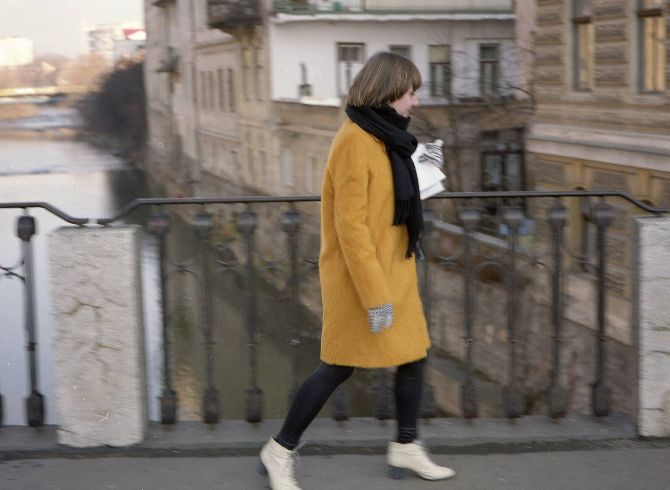
When she has her free moments, she likes riding the bike with her husband, or going to the swimming pool. “It’s nice to know that you have worked five hours in the morning and now you can take a break, read a book at the pool, under the sun.”
In December she will have a baby girl. “I’m curious how it will change our life. But I think it will bring a certain order.I’ll be able to see projects with different eyes, see what’s worth doing and what’s not.” But she thinks it will be easier, because both her and her husband are freelancers, so they’ll just find a place in the studio for their daughter. “I’m glad she’ll be a girl, we’ll be playing with the dolls, sewing clothes for them,” she says. “I’d be happy if she liked what we are doing and worked with us. But I hope she doesn’t have the artists’ arrogance too soon ,” she adds laughing.
By Diana Mesesan, features writer, diana@romania-insider.com
(photos by Mihai Platica & illustrations by Agnes Keszeg)







